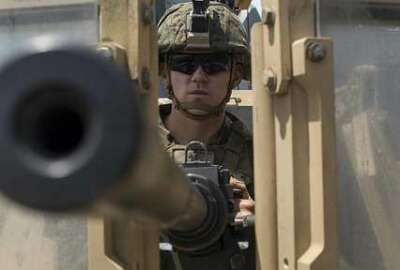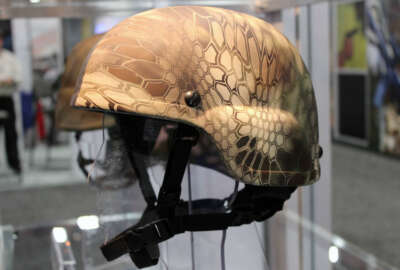
Rapid Equipping Force gives Army objective measure for head traumas
Two new devices will be able to detect brain injuries and bleeding in the brain.
Best listening experience is on Chrome, Firefox or Safari. Subscribe to Federal Drive’s daily audio interviews on Apple Podcasts or PodcastOne.
The Army is attuned to the dangers of head trauma now more than ever, and it’s counting on one of its rapid procurement offices to deliver a medical diagnostic device to soldiers in the field.
Head traumas can be hard for doctors to spot, mostly because not all the warning signs are usually present.
But the Army Rapid Equipping Force‘s (REF) new devices can come in handy for that very reason. The tools provide an objective measure of brain activity, instead of relying on split second reactions that a human may miss when inspecting soldiers.
The REF teamed up with Army Medical Research and Materiel Command (MRMC) to deliver two new tools for traumatic brain injuries to soldiers in Afghanistan, Iraq, Kuwait and Korea.
“We haven’t partnered with MRMC a whole lot and we believe here at the REF that whenever we partner with another organization we are going to come out with a superior solution,” REF Deputy Director Steven Sliwa told Federal News Radio.
MRMC lent REF its medical expertise to develop two devices that may help better recognize TBIs.
REF is an organization that tries to turn battlefield requests into realities in six months or less, a testament to the Army’s urgency in diagnosing head traumas.
Sliwa said the devices are another tool for soldiers to decipher if there has been a TBI or not.
“Often on the battlefield you’ve got a triage process to decide whether a soldier needs to go to a next level of care. This is going to be one of the tools in their kit bag to confirm whether that soldier is really OK or needs to move to a facility that has a CT scan available,” Sliwa said. One device “is kind of a halo and the other is a wand that’s scanned in the area of impact.”
The first device interprets brain electrical activity and neurocognitive function. The second tool rapidly detects brain hematomas in patients with head injuries.
“The REF is one of the most unique and valuable resources we have to quickly provide technologies to the deployed setting and gain user feedback,” said Brian Dacanay, a TBI device product manager at the U.S. Army Medical Materiel Development Activity. “Utilizing the REF to deploy the latest FDA-cleared technologies will provide programmatic feedback for locations where medical resources are limited. Information gathered from equipping units with these devices may influence future fielding plans to fill capability gaps for optimal patient care.”
More than 370,000 TBIs were reported in service members between 2000 and 2017, and 12 percent of those were moderate to severe, according to the Defense and Veterans Brain Injury Center.
Head trauma is an area where DoD is playing a bit of catch up. Last December, civilian and military medical professionals told Congress that the force from shooting heavy guns and other military specific work had the potential to cause brain injury.
Dr. David W. Dodick, sports neurology and concussion program director at the Mayo Clinic said there are many times when a brain injury simply isn’t apparent.
“A lot of times the visible signs may not be present even for those of us who have been examining patients for over 20 years. The signs can be so subtle that they are not picked up on the routine bedside examination,” Dodick said.
Dodick said the military needs objective, widely available and cost effective tests that rapidly identifies when a concussion has occurred, allowing for the removal of the individual from activities that place them at risk.
Copyright © 2025 Federal News Network. All rights reserved. This website is not intended for users located within the European Economic Area.
Scott Maucione is a defense reporter for Federal News Network and reports on human capital, workforce and the Defense Department at-large.
Follow @smaucioneWFED






